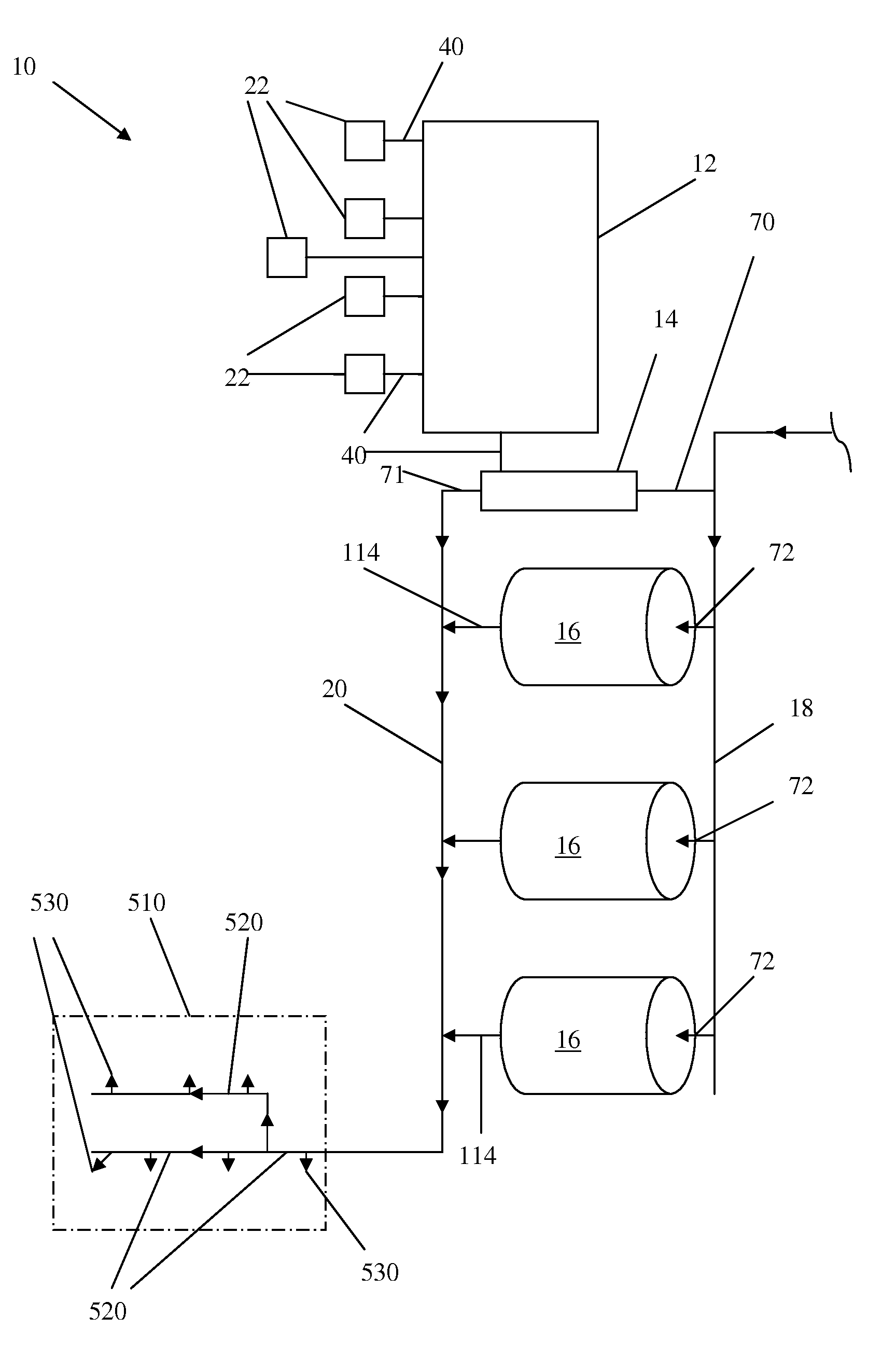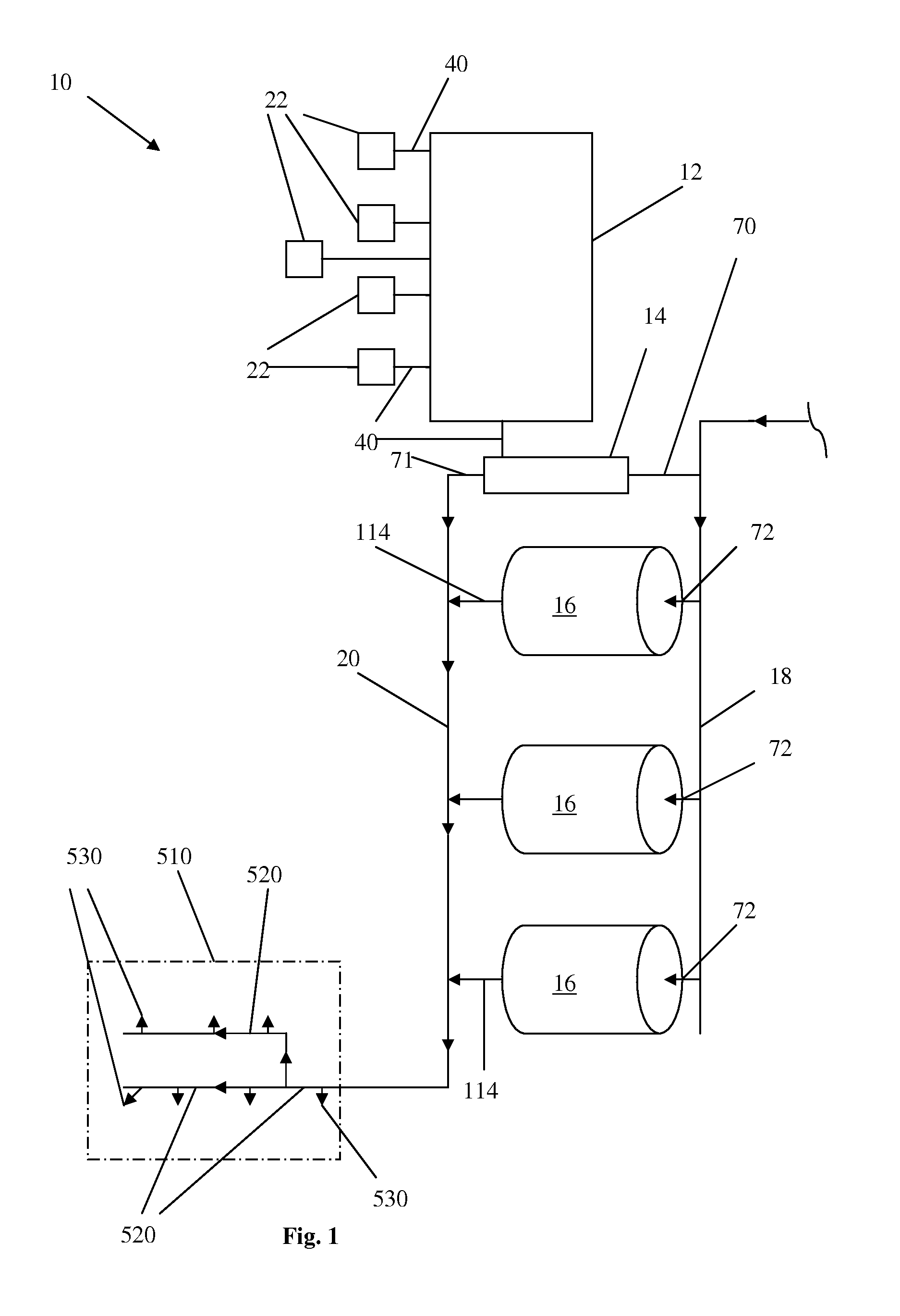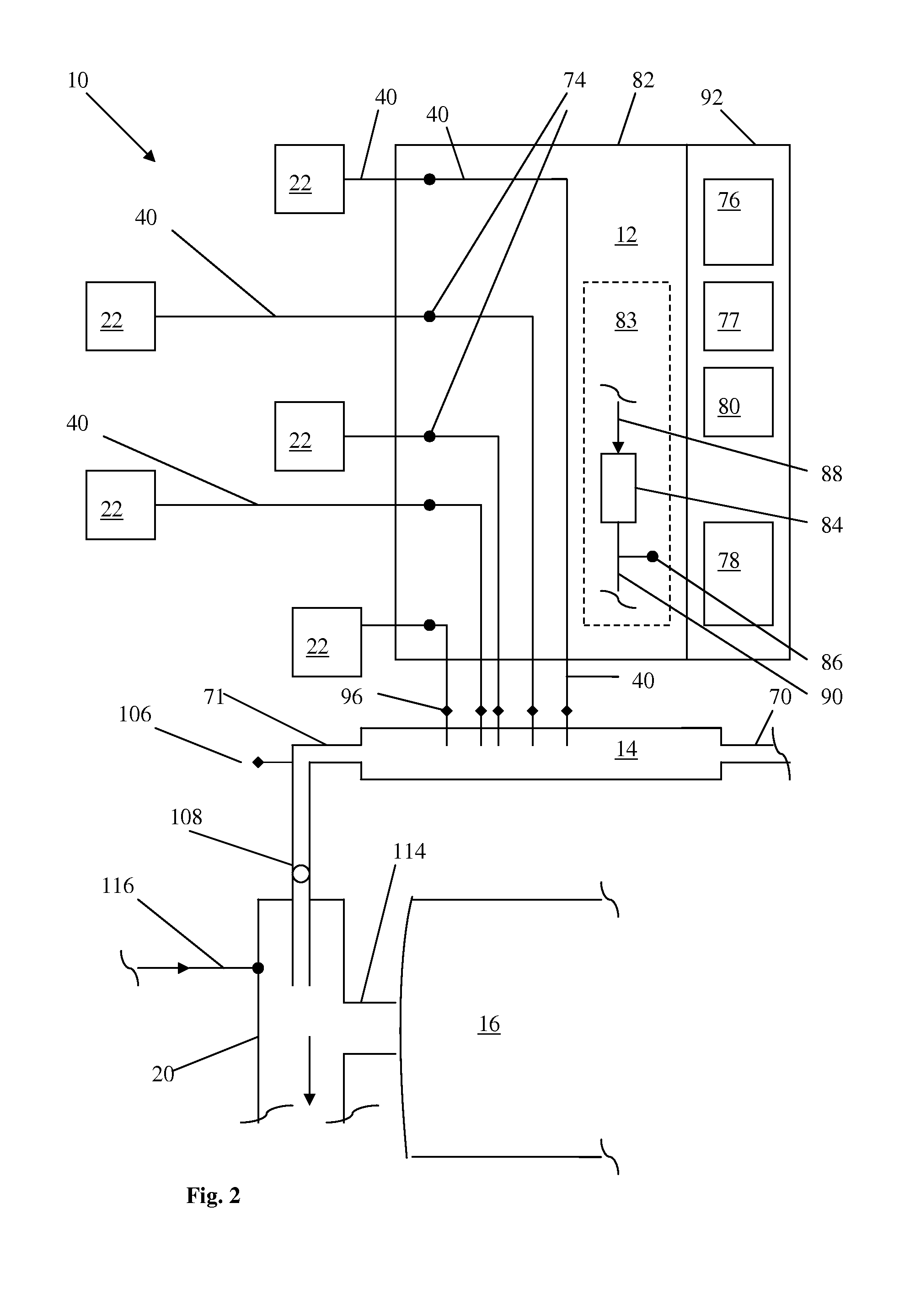Method and system for agricultural fertigation
a technology of agricultural fertigation and agricultural micro-irrigation, applied in the field of agricultural micro-irrigation and sprinkler systems, can solve the problems of increasing the cost of water, increasing the need, and reducing the labor expended in the addition of fertilizers, so as to increase the quantity of crop yield, enhance the quality of crop, and boost the quality of crop
- Summary
- Abstract
- Description
- Claims
- Application Information
AI Technical Summary
Benefits of technology
Problems solved by technology
Method used
Image
Examples
example 1
Continuous-Feeding Projections and Multivalent Ion Levels
[0156]The continuous manufacture and addition time periods, the crop-quality enhancers continuously fed and the amount and type of nutrient / additive applied are set forth in Table 4 below.
[0157]
TABLE 4Time periodRaw MaterialsAmount(s) of Nutrient / Additive Applied2 / 1 - 6 / 30Calcium nitrate13.7 lbs / acre nitrate nitrogen (as N) soln.and 19.5 lbs / acre Ca (as Ca)sameMagnesium6.9 lbs / acre nitrate nitrogen (as N) nitrate soln.and 6.0 lbs / acre Mg (as Mg)sameUrea soln.7.0 lbs / acre urea nitrogen (as N)sameAmmonium8.7 lbs / acre ammoniacal nitrogen (as N)hydroxide soln.samePotassium25.0 lbs / acre potassium (as K2O)hydroxide soln.samePhosphoric acid11.0 lbs / acre phosphorus (as P2O5)(conc.)sameSulfuric acid as required to both react with other (conc.)crop-quality enhancers and lower the irrigation-water pH to 6.57 / 1 - 9-30Calcium nitrate13.7 lbs / acre nitrate nitrogen soln.(as N) and 19.5 lbs / acre Ca (as Ca)samePotassium15.0 lbs / acre potassium ...
example 2.1
Continuous Feed—Acid / Base Reaction Profile
[0202]Since (as shown above) there is considerably more alkalinity being added to the irrigation, to avoid the massive plugging that ordinarily would occur, concentrated sulfuric acid is added to neutralize the excess alkalinity (achieve a neutral pH) in the approximate amount of: (1267.2 OH− moles / acre)−(764.8 H+ moles / acre) or 502.4 H+ moles / acre. That requires: 502.4 H+ moles / acre×98 g / mole×(H2SO4 / 2H+)×100% / 98%×2.2 lbs. / 1000 g or 55.3 lbs. / acre. The volume amount is 55.3 lbs. / acre×150 acres×1 gal. / 15.30 lbs. or 541.8 gallons.
[0203]During the time period of March 1 through May 31, there are 75.2 irrigation periods (1.0 ac-ft / acre / (0.0133 ac-ft), and the sulfuric acid feed rate is: 541.8 gal. / 75.2 cycles×1 cycle / 9.0 hrs.×1 hr. / 60 min. or 0.0133 gal. / min. (over 75.2 fertigation applications). In practice, the sulfuric acid pump is preferably initially set for about 120 percent of the calculated feed rate to achieve the desired pH because of ...
example 3
Continuous In-Situ Manufactured Fertigation Embodiment of the Present Invention
[0300]The nutrient profiles (below) are satisfied with a continuous feeding of a plurality of co-reactant crop-quality enhancers and any included non-co-reactant crop-quality enhancers, the composition of which is different during three continuous-fertigation intervals (each designated by the first and last dates of the interval) wherein up to seven co-reactant and non-co-reactant crop-quality enhancers are simultaneous charged at separate, but proximate, feed points along the irrigation system's main line. These co-reactant crop-quality enhancers, upon intermixing and reacting within the main line, and upon intermixing with any included non-co-reactant crop-quality enhancers, produce the present invention's fertilizer crop-quality enhancers. The in-situ manufacturing method embodiment of the present invention provides the flexibility with limitless and continuous fertigations (for every irrigation set) a...
PUM
| Property | Measurement | Unit |
|---|---|---|
| pressure | aaaaa | aaaaa |
| temperature | aaaaa | aaaaa |
| temperature | aaaaa | aaaaa |
Abstract
Description
Claims
Application Information
 Login to View More
Login to View More - R&D
- Intellectual Property
- Life Sciences
- Materials
- Tech Scout
- Unparalleled Data Quality
- Higher Quality Content
- 60% Fewer Hallucinations
Browse by: Latest US Patents, China's latest patents, Technical Efficacy Thesaurus, Application Domain, Technology Topic, Popular Technical Reports.
© 2025 PatSnap. All rights reserved.Legal|Privacy policy|Modern Slavery Act Transparency Statement|Sitemap|About US| Contact US: help@patsnap.com



